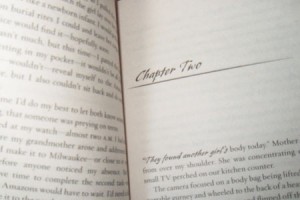 Article Three in How to Write a Scene – Show Motivation with Sequel by Lori Devoti, a How To Write Fiction Series.
Article Three in How to Write a Scene – Show Motivation with Sequel by Lori Devoti, a How To Write Fiction Series.
Sequel Defined: (Swain, Techniques of the Selling Writer) “A sequel is a unit of transition that links two scenes….It sets forth your focal character’s reaction to the scene just completed, and provides him with motivation for the scene next to come.”
In other words, it is where your character realizes something has happened, reacts to it and then decides his next move. It is where you show motivation.
One point here…a sequel can be long or it can be very short. It can be set off by breaks in copy like a scene or it can actually be included in a scene. It all depends on the type of book you are writing and how fast or slow you want the pace of the book to be. Slower paced book…longer sequels. Fast paced, like a thriller, short.
But no matter how fast you want your pace to be, at some point you need some sequel, some reflection and decision making on the character’s part.
And the reader needs to experience that decision making. Sequel shows the character’s motivation and keeps the reader from feeling the character did something out of character. It makes the character’s actions logical. It also gives a sense of purpose to the character’s actions. It shows the reader that the character is driving the story, not simply being swept along by events.
Show Motivation through Sequel Example from The Lure of the Wolf by Jennifer St. Giles
“Glancing back at her dwelling a brief moment, he wondered about the voice that had frightened her. It still disturbed him. He’d heard every word the man had whispered, and it wasn’t so much what the man had said, but what Aragon sensed it had done to the mortal woman. A very deep pain lay hidden beneath her fiery warmth, and the man had made her pain worse.
Aragon took three steps back, drawn toward the woman, then swung away with his hands fisted. (REACTION) He couldn’t allow himself to get involved in the mortal realm, or he’d lose his chance at Pathos. Time was running out.(DILEMMA) He shifted into his were-form and set his acute senses on detecting one thing–Pathos. (DECISION)”
So, as your plugging along, don’t forget sequel. Make it long, or make it short, but don’t leave it out, or your readers may walk away saying things like “I didn’t buy that’s what the hero would have done.” “That just didn’t fit with his character.”
Stories aren’t just a series of events. They are about characters going through those events. Let us live the story with them.
Go to the fourth article in this How to Write a Scene series– Build Impact with Sequence
Need more help on how to write a scene and how to show motivation?
~~~

Lori Devoti is the author of paranormal romance, urban fantasy and young adult fiction. Under the name Rae Davies, she writes the USA Today Bestselling Dusty Deals Mystery series. Check our her books at www.LoriDevoti.com and RaeDavies.com. Looking for help with your writing? Lori also does developmental editing and critiques for other authors and publishers. See our Editorial Services page for contact information and pricing.

0 Comments
Trackbacks/Pingbacks